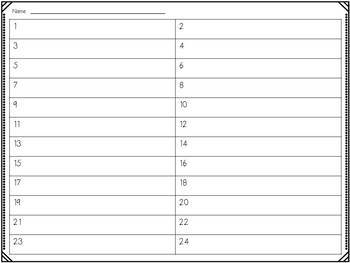
From this literature grew the spatial contiguity principle (or spatial contiguity effect), which states that people learn more when related words and pictures are displayed spatially near one another. Spatial split-attention effects have been noted in the research literature, where, under split-attention conditions, integrating text and diagrams has been shown to be effective. Research-based design of learning tools can enhance BLS and CPR education. This study shows that the design of instructional tools (i.e., task cards) affects student learning. For chest compression depth, compression frequency, compressions with correct hand placement, and duty cycles no significant differences were found. One-way analysis of variance found significantly better performances in the experimental group for ventilation volumes (P=.03,ηp(2)=.10) and flow rates (P=.02,ηp(2)=.10). In the experimental group, written instructions were placed close to the corresponding part of the picture on the task cards reflecting application of the spatial contiguity principle. In the control, written instructions were placed under the picture on the task cards. In each class, students were randomly assigned to the experimental group or the control.
#Taskcard download how to#
Task cards combine a picture of the skill with written instructions about how to perform it. A total of 111 students (mean age: 13 years) constituting six intact classes learned BLS through reciprocal learning with task cards. The effect of spatial contiguity, a design principle stating that people learn more deeply when words and corresponding pictures are placed close (i.e., integrated) rather than far from each other on a page was investigated on task cards for learning Cardiopulmonary Resuscitation (CPR) during reciprocal peer learning.Ī randomised controlled trial. To demonstrate that the design of instructional tools matter. Research investigating design effects of instructional tools for learning Basic Life Support (BLS) is almost non-existent.

Results do not support the assumption that videos are superior to pictures for learning BLS and CPR in reciprocal learning.

No other significant differences were found. In the Picture group significantly higher percentages of chest compressions with correct hand placement were achieved (M = 67%, CI = 58-77) compared to the Video group (M = 53%, CI = 43-63), P =.

BLS assessment occurred unannounced, three weeks following intervention.Īnalysis of variance demonstrated no significant differences in chest compression depths between the Picture group (M = 42 mm, 95% CI = 40-45) and the Video group (M = 39 mm, 95% CI = 36-42). Informational equivalence was assured since instructions in both groups comprised exactly the same words. In the Video group, BLS was learned through videos with on-screen instructions. In the Picture group, students learned BLS by means of pictures combined with written instructions. Student pairs in each class were randomized over a Picture and a Video group. A total of 128 students (mean age: 17 years) constituting eight intact classes from a secondary school learned BLS in reciprocal roles of doer and helper with tablet PC's. To investigate whether learning basic life support (BLS) and cardiopulmonary resuscitation (CPR) from video produces higher learning outcomes compared to pictures in reciprocal learningĪ randomized controlled trial. It is often assumed that animations (i.e., videos) will lead to higher learning compared to static media (i.e., pictures) because they provide a more realistic demonstration of the learning task.


 0 kommentar(er)
0 kommentar(er)
